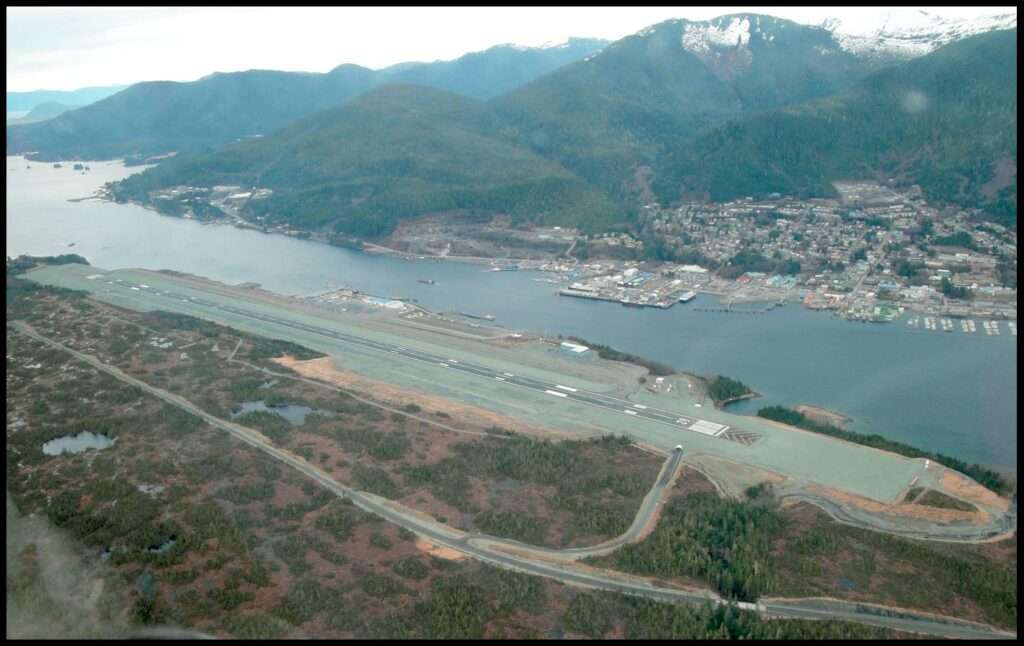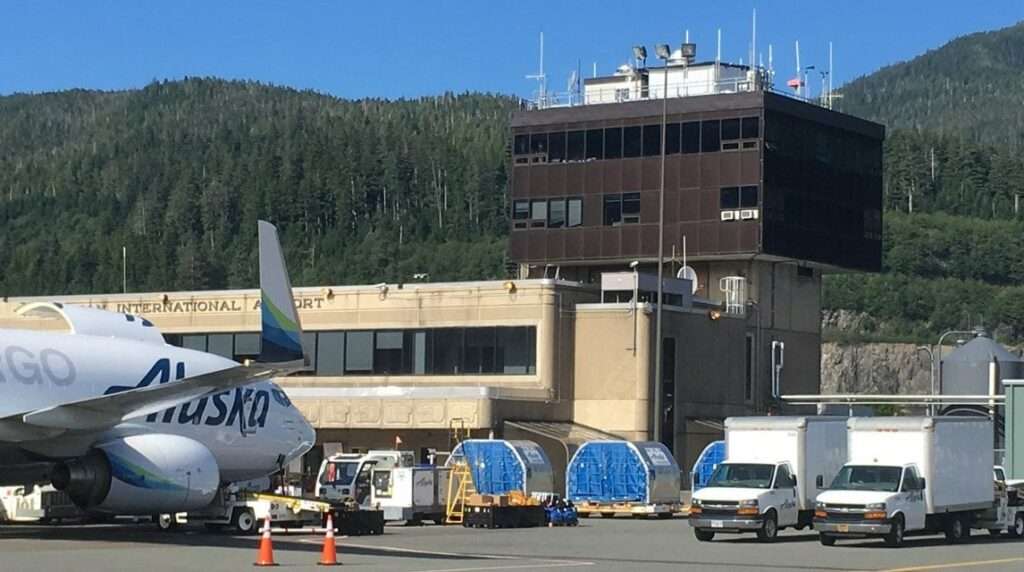Ketchikan International Airport (KTN), nestled on Gravina Island in Southeast Alaska, boasts a rich history intertwined with the growth of air travel in the region.
This article explores the journey of KTN, from its beginnings as a seaplane hub to the modern airport it is today.
The Early Days: Seaplanes and the Need for Expansion (1920s-1960s)
Ketchikan’s relationship with aviation began in the 1920s with the rise of seaplanes.
These versatile aircraft, perfectly suited for Alaska’s abundance of water bodies, landed and departed from various locations around Ketchikan, including the harbor and nearby bays.
Early air carriers like Alaska Air Transport (later Alaska Airlines) utilized seaplanes to connect Ketchikan with other Alaskan communities.
However, as air travel technology evolved and larger passenger aircraft emerged, the limitations of seaplanes became apparent.
Runways were needed to accommodate the growing demand for air travel and the desire for larger, faster planes.
By the 1960s, the need for a dedicated airport with a runway became increasingly clear.
The Search for a New Home: Studies and Site Selection (1960s)
Recognizing the limitations of seaplanes, the Alaska State Division of Aviation commissioned a study in 1965 to explore the feasibility of a new airport for Ketchikan.
Following the study’s recommendations, a further evaluation in 1967 considered three potential locations: Point Higgins, Pennock Island, and Gravina Island.
Gravina Island emerged as the preferred choice due to several factors. Its location offered sufficient space for a runway and future expansion.
Additionally, the relatively flat terrain presented fewer construction challenges compared to the other options.
With the site chosen in 1967, the groundwork for a new era of air travel in Ketchikan was laid.
Building a Dream: Construction and Opening (1969-1973)
Securing the necessary funding was the next step.
A crucial milestone occurred in 1972 when the Ketchikan Gateway Borough passed a bond measure to support the construction of the new airport’s terminal building and facilities.
With funding secured, construction on Gravina Island began in earnest in 1969.
The years that followed were a period of fervent activity.

Land clearing, runway construction, and terminal building development progressed steadily.
The culmination of these efforts arrived in 1973 with the grand opening of Ketchikan International Airport on August 4th.
The following day saw the airport’s official dedication, marking a significant turning point in Ketchikan’s aviation history.
A New Era Takes Flight: The Arrival of Jet Service (1973-Present)
The opening of Ketchikan International Airport ushered in a new era of air travel for the region.
One of the first airlines to capitalize on the new facilities was Alaska Airlines, which inaugurated the first jet service from Seattle using a Boeing 720 on the very first day of operations.
This marked a significant leap forward from the limitations of seaplanes, offering faster travel times and increased passenger capacity.
Over the years, Ketchikan International Airport has continued to grow and adapt.
Alaska Airlines has remained a major presence at the airport, operating various Boeing 727 and 737 models throughout the decades.
Other carriers have also come and gone, offering connections to various destinations within Alaska and the wider Pacific Northwest.
The airport itself has undergone improvements and expansions over time.
The terminal building has been modernized to accommodate the increasing passenger traffic.
Safety features and operational capabilities have been continuously upgraded to meet the evolving standards of the aviation industry.
Challenges and the Future of Ketchikan International Airport
Despite its success story, Ketchikan International Airport faces some challenges.
Its location on Gravina Island necessitates ferry transportation for passengers and vehicles to reach the mainland, adding an extra leg to the travel journey.
Proposals for a bridge connecting Gravina Island to Ketchikan have been debated for years, but construction has not materialized due to cost concerns and environmental considerations.
Looking ahead, Ketchikan International Airport remains a vital transportation hub for Southeast Alaska.
The airport continues to play a crucial role in tourism, business travel, and connecting Ketchikan to the wider world.
As air travel technology continues to evolve, it will be interesting to see how Ketchikan International Airport adapts and positions itself to meet the needs of the future.

Click the banner to subscribe to our weekly newsleter.

Click the photo to join our WhatsApp channel so then you can stay up to date with everything going on in the aviation industry!









